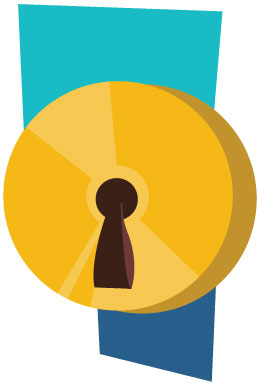Hey Kids, It's a Cymbal | History, Fun Facts, and More
from the Meet the Orchestra Index

Hey, Kids, It's a Cymbal
Learn cymbal history, how it's made, how it's played, about the percussion family, and a fun fact.
The Cymbal is a member of the percussion family. The cymbal is a thin round metal plate that serves to provide colorful effects to the overall sound of the orchestra. Some of the most popular cymbals include tiny finger cymbals, crash cymbals, and suspended cymbals. The cymbal can play very softly or very loudly. It can be played so loud in fact, that it can be heard over even the most uproarious of orchestral music.
History
Cymbals can be traced back to prehistoric times. The word cymbal is derived from the Latin word cymbalum which has its origin in the Greek word kumbalom which means small bowl. The British Museum has in its collection two pairs of ancient Egyptian cymbals thirteen centimeters in diameter. One of the pairs of cymbals was found in the coffin of the mummy of Ankhhape, a sacred musician. Cymbals used by the Assyrians were both plate shaped and cup shaped. Cymbals of the Ancient Persians were shaped like big plates and made of brass.
How It's Made
Cymbals begin in a foundry where copper, tin and traces of silver are combined into a perfect blend of metals. Next, the castings are placed in a pizza-style rotary oven until they glow at a red hot 1410F. After being heated in the oven, the castings are flattened in a rolling mill. After heating the metal disk again the bell is pressed in. It is heated yet again and then submersed in cold salt water for tempering. Until this point the castings remain very brittle. The process of tempering the cymbal makes the metal more flexible and sturdy. It's not looking much like a cymbal just yet but a quick trip to the circle shearing machine will take care of that. Next, the cymbal heads to the hammering and lathing room to find its musical voice. The final step, after the cymbal is made perfectly smooth, is to buff it to a brilliant finish.
How It's Played
Crash cymbals are held by placing your hand through a strap that is attached to the outside of the cymbal. They are played by sliding one cymbal across the other and striking the rim of one cymbal against the rim of the other cymbal. Striking the edges together causes the cymbals to vibrate more which, in turn, causes a louder sound.
Suspended cymbals are supported by a tri-pod stand and can be played in two different ways. The most common way to play the suspended cymbal is to strike the bow or taper of the cymbal with a drumstick or mallet. Striking the bell of a suspended cymbal will create another sound which is higher than the rest of the cymbal. This effect is common in Latin music.
The Percussion Family
The cymbal is a member of the percussion family. The percussion family includes the timpani, snare drum, bass drum, xylophone, glockenspiel, chimes, gong, cymbals, and many smaller percussion instruments.
Fun Fact
In the year 1623, Avedis Zildjian, an Armenian alchemist in the city of Constantinople, in his attempt to create gold from a combination of copper, tin and traces of silver, found instead a new metal alloy with unique sound qualities. The secret blend of Zildjian's celebrated cymbals remains the same today as it was four centuries ago.
Watch a Video
Watch a How It's Made-Cymbals video that will offer your kids a virtual field trip to the Zildjian cymbal factory.
Browse Related Free and Premium Sheet Music and More
Worksheets
Meet the Orchestra Scavenger Hunt | Percussion Family Worksheet